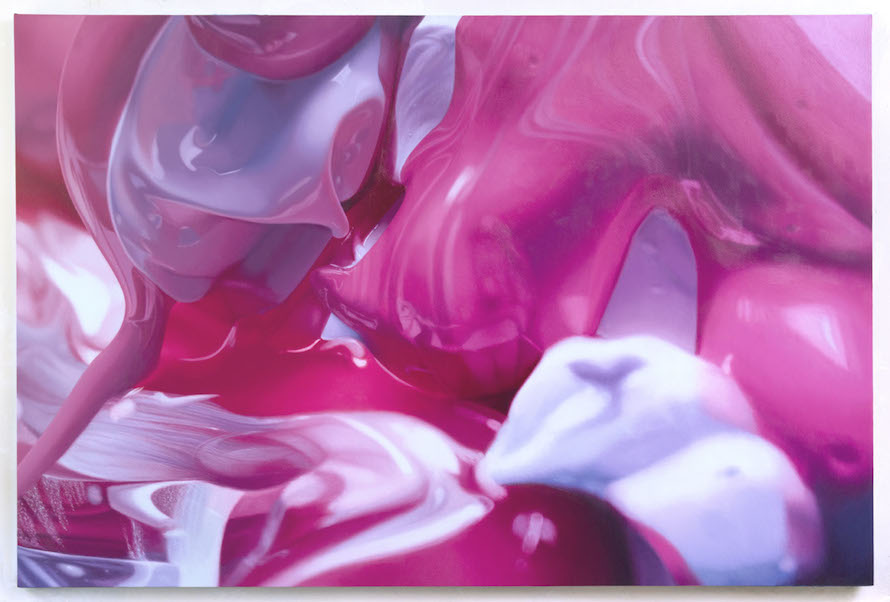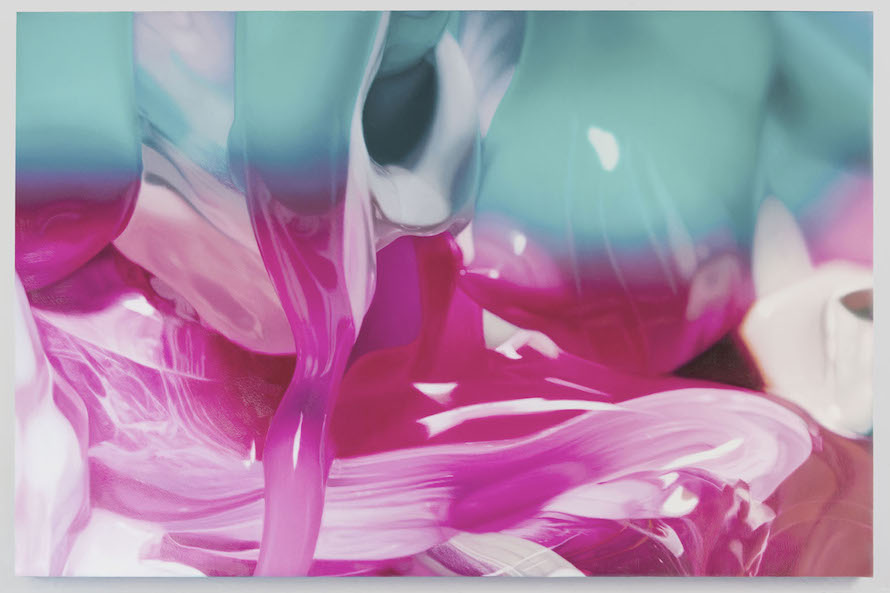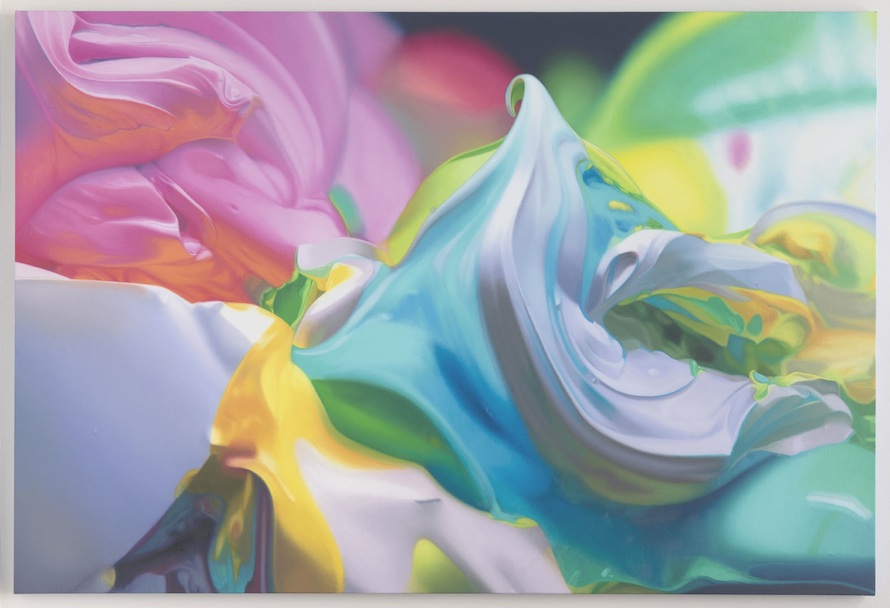We spoke about your show “SMUSH” about a year ago. How have your art and process changed since then?
Ben Weiner:“SMUSH” was very medium specific. It documented my painting process through close-up paintings of my palette, a video installation that magnified scenes of paint being manufactured, and crystal sculptures grown from pigment.
My new body of work, “MaximumStrengthAgeDefy,” adapts some of the technical methods I used in “SMUSH” to an exploration of consumer health and beauty products. I’m interested in the common preservative function of such cosmetics, which are supposed to maintain our youth and beauty, and paint, which preserves a likeness or human gesture. These cosmetics are also physically similar to paint, as they are made using common manufacturing methods and, sometimes, similar ingredients. So my in-depth study of paint has expanded into to an exploration of the mass-produced aesthetic materials that surround our bodies in daily living, and the consumer obsession with newness.
A formal difference is that this series is more abstract. These compositions have an all-over quality, filled with drips and color striations that reference Modernist abstraction such as AbEx and action painting. The works in “MaximumStrengthAgeDefy” are the culmination of a gradual shift in my artistic practice, through which I’ve come to approach it as a form of process painting. I drip and pool the cosmetics under a microscope, then paint from screen captures of this imagery on my computer monitor, evolving a composition as I work.
While working on this series, I was looking at a lot of the exciting abstraction I’ve seen in the past few years by artists such as Tauba Auerbach, Wade Guyton, Katharina Grosse, Travess Smalley, Ryan Sullivan, and Kadar Brock. I am also interested in the concept of the painted abstraction as memento mori, or symbol of mortality. In a way, these paintings are memorializing our ultimately futile attempts to preserve our bodies, beauty, and mortality using consumer cosmetics.
TMN:The saying goes that nothing’s more boring than watching paint dry. You’d disagree?
BW:(Laughs.) Yes, viewed through a microscope and sped up using time-lapse photography, the process of paint drying can be quite captivating.
I think my interest in such material transformations probably reflects something most painters feel—the idea that engagement with a material can yield profound truths—a sort of world-in-a-grain-of-sand philosophy.
Painting is a rare instance of self-sufficient production in a world of mass manufactured commodities. In this sense, my knowledge of paint chemistry gives me an unusual perspective on the other materials we use in our mundane lives—like the fact that paint, cosmetics, and food use many common ingredients and manufacturing methods.
TMN:What’s a typical work day?
BW:I wake up around 7:30, meditate, go for a run, and read for a bit. From 10 a.m. until 9 p.m. I work on paintings. I listen to a lot of music, podcasts, and audio books while I paint. I take a two-hour break for lunch, and during that time I also do correspondence and work on writing projects. I tend to work on things in blocks of time—I prefer to be immersed in whatever task I’m doing.
TMN:What was the first piece of art you ever sold?
BW:Some friends in the town where I grew up commissioned me to paint their family portrait. Strangely enough, as I was working on the commission, I became mesmerized by the bright colors on my palette and began photographing it, and eventually used those photos for my first paintings of paint. So I guess, in a way, procrastination set me on the path to my true calling.
TMN:What’s the ugliest consumer good you actually like?
BW:Wow, that’s a tough question. I am really fascinated by the absolutely disgusting processed materials we put into and onto our bodies. I recently purchased a can of Crystal Pepsi off of eBay—remember that stuff?
TMN:Amazing stuff.
BW:I was really excited to find that. Some of the mixed-media drawings in this show were made with 5-hour Energy, which I think is pretty foul. Also, several of the paintings depict Axe body wash—a subject I kind of stole from Timur Siquin—which is a product that I think really embodies the mutated nature of advanced consumer culture. What is that malt-liquor energy drink? Four Loko! Basically, the more unnatural and ridiculous a product is, the better.
TMN:What’s currently the most difficult part of making art for you?
BW:Keeping the bigger picture in mind. That’s always the most difficult part, and, in my opinion, the thing that separates a great work of art from a great artist. I think most artists have it in them to produce great works, but much fewer would be able to continue to innovate, grow, stay positive, connect with peers, and relate to the present context over many years.
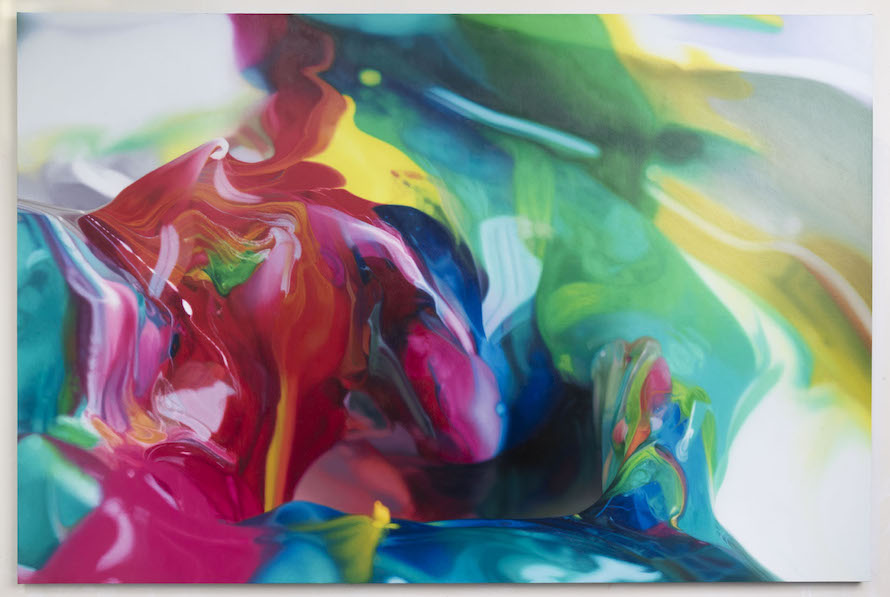
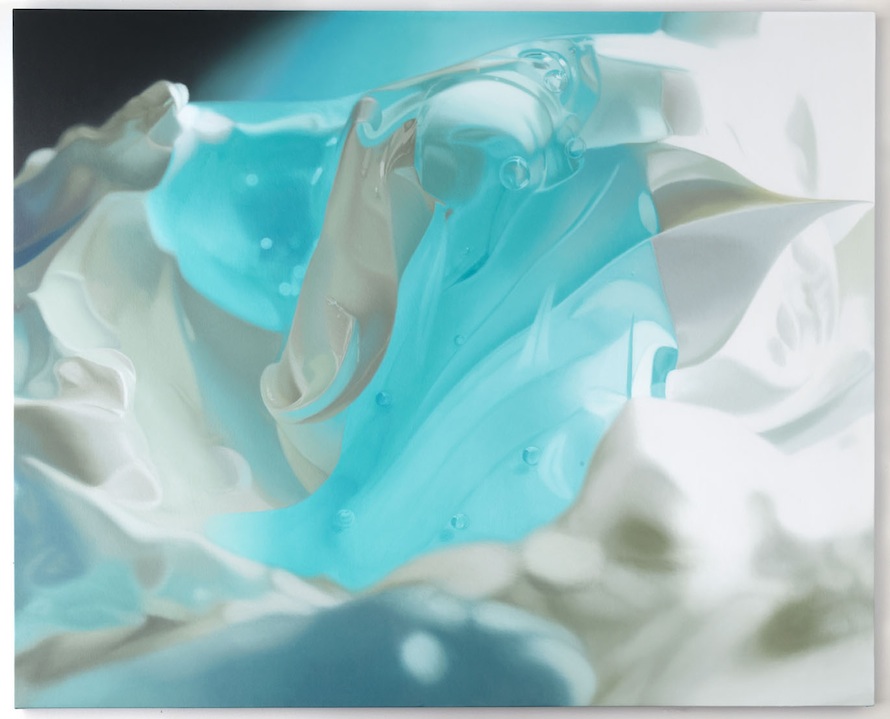


hole.jpeg)
